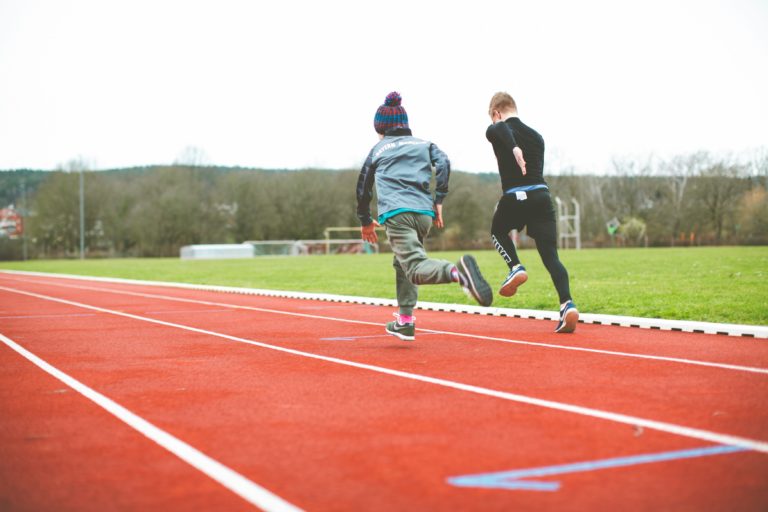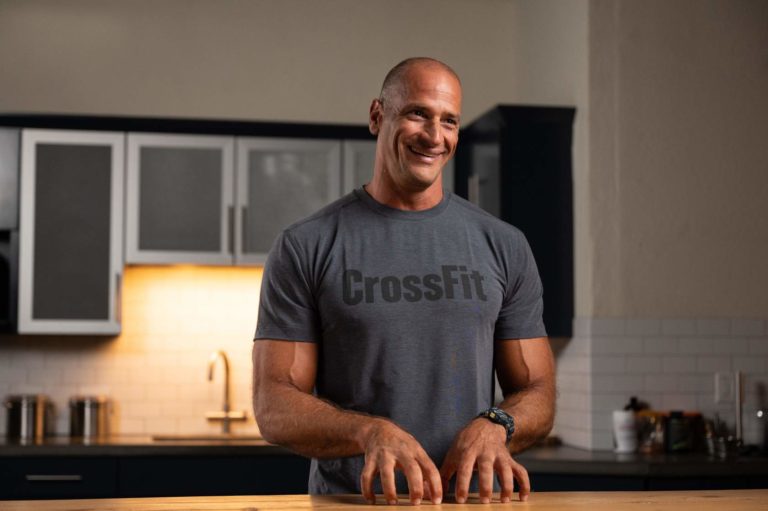Weightlifting has been part of CrossFit programming since the beginning. In fact, CrossFit spurred a rebirth of weightlifting in the United States, the nation that was once the dominant power in the sport. Because of CrossFit’s influence, you see bumper plates and platforms at many commercial gyms.
Sprinting is very similar to weightlifting in that it is a high-power activity that develops great strength, midline stability, and an enormous dose of neurological skills. Requiring no specialized equipment, sprinting is accessible to all, pretty much anywhere. And there could not be a more natural functional movement pattern for humans. Sprinting is part of our DNA, and to build the type of fitness CrossFit chases, we need to be able to sprint. Just as we program heavy days, we need to program speed days. For whatever reason, though, sprinting does not share the same prominence in CrossFit programming as weightlifting. Our coaching community seems much more comfortable teaching snatches and clean and jerks than speed drills and sprints.
The great thing is that while sprinting, like weightlifting, is a highly technical endeavor, it can be taught to anyone just as easily as Mike Burgener taught us to teach the Olympic lifts.
So while no doubt training a champion sprinter or weightlifter requires a fine eye for the minutest details of position and timing at incredible speeds, we don’t need to break world records to get good enough at sprinting to receive all the fitness benefits it provides. Mastering a few basic sprinting points of performance gets us everything we need. To become a solid sprinter requires, in the words of sprint guru Tony Holler, the athlete to get tall, cross the hips, and have a big front side.
Get Tall
When sprinting, “getting tall” refers to the athlete’s upright posture where the head and shoulders stay directly over the hips. The athlete’s back remains straight, and while a slight forward lean is desirable, there’s no bending at the waist. As the athlete covers ground, they should keep the hips high and avoid a “sitting down” posture.
A good analogy to visualize proper max velocity position (the upright body position we see once a sprinter has reached full speed) is that the athlete adopts the tall, hip-high position they would need to remain balanced on a unicycle. This upright posture allows for greater efficiency in transferring power from the legs to the ground as it promotes the foot strike directly underneath the hips to minimize breaking forces and maximize forward momentum. This position also keeps the athlete balanced and controlled during the sprint to promote the most efficient line of travel.
Cross the Hips
 To propel themselves forward as effectively as possible, sprinters must have a big backswing of the arm. Coaches can cue “cross the hips” or “drive the elbow back.” Essentially, we want the sprinter’s back hand to travel well behind the hips. Many novice runners focus on their hands out in front, and miss the big back swing, to the detriment of their speed. A common coaching cue for the amplitude of the arm swing has always been “cheek to cheek,” meaning the hands reach the sprinter’s cheeks (basically eye level) on the front side, and their butt cheeks on the back side. This isn’t a lousy cue, but in reality we want that back hand further behind the athlete than just the butt cheek.
To propel themselves forward as effectively as possible, sprinters must have a big backswing of the arm. Coaches can cue “cross the hips” or “drive the elbow back.” Essentially, we want the sprinter’s back hand to travel well behind the hips. Many novice runners focus on their hands out in front, and miss the big back swing, to the detriment of their speed. A common coaching cue for the amplitude of the arm swing has always been “cheek to cheek,” meaning the hands reach the sprinter’s cheeks (basically eye level) on the front side, and their butt cheeks on the back side. This isn’t a lousy cue, but in reality we want that back hand further behind the athlete than just the butt cheek.
Crossing the hips with the hands or focusing on driving the elbow back takes advantage of the stretch reflex at the shoulder. Bringing the hand and elbow so far back stretches the muscles of the shoulders and pecs, resulting in the arm coming back forward faster than it would without this stretch. It also requires less energy on the part of the sprinter to bring the arm back forward. Since the speed of the arms drives the speed of the legs, a big arm drive where the hands cross the hips improves performance.
Big Front Side
By “big front side,” we mean we want the front knee high, top of the thigh parallel with the ground, and front foot out in front of the sprinter underneath the knee with the toe pulled up toward the shin. The trail leg “toeing off” or driving into the ground creates a significant split of the thighs (visualize a lunge position). This is not the small, low-amplitude stride of a distance runner or tired CrossFit athlete in the middle of a met-con. Like the stretch reflex at the shoulder, a big front side and a big split of the thighs generate a stretch reflex in the trailing leg at the hip and quads. As a result, when the trail leg finishes “toeing off” and leaves the ground, it is whipped forward to the front leg position faster and with less energy expended by the sprinter. So, having a big front side allows for greater stride length and frequency, resulting in better speed.
As you implement your speed program, focus on these three crucial technical elements — sprinting tall, crossing the hips, and having a big front side — and you will see tremendous improvements in your sprinting. You can also practice these skills daily during warm-ups or workouts with the speed drills mentioned in our previous article. These speed drills are explicitly designed to ingrain these positions. It’s time to make sprinting the new weightlifting in CrossFit!
For more on sprinting, check out my conversation with Eric O’Connor (CF-L4). We break down all of the phases, why we need them, and how to make sprinting part of your routine.
About the Author
 Stephane Rochet is a Senior Content Writer for CrossFit. He has worked as a Flowmaster on the CrossFit Seminar Staff and has over 15 years of experience as a collegiate/tactical strength and conditioning coach. He is a Certified CrossFit Trainer (CF-L3) and enjoys training athletes in his garage gym.
Stephane Rochet is a Senior Content Writer for CrossFit. He has worked as a Flowmaster on the CrossFit Seminar Staff and has over 15 years of experience as a collegiate/tactical strength and conditioning coach. He is a Certified CrossFit Trainer (CF-L3) and enjoys training athletes in his garage gym.